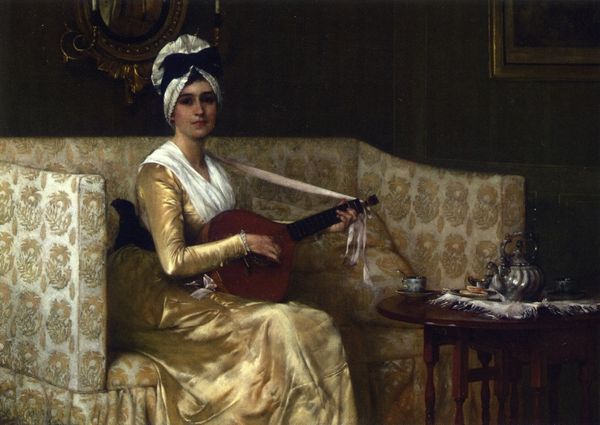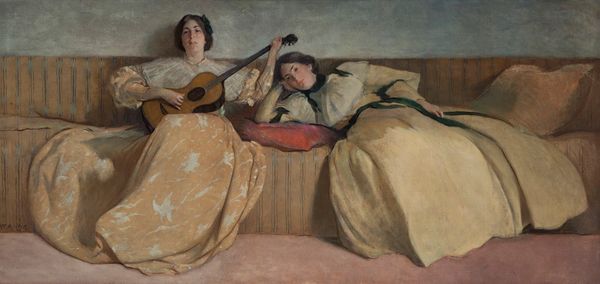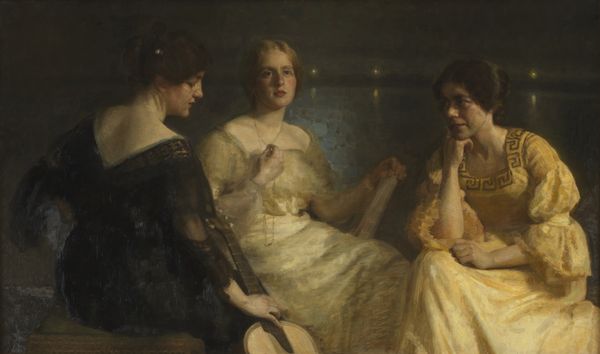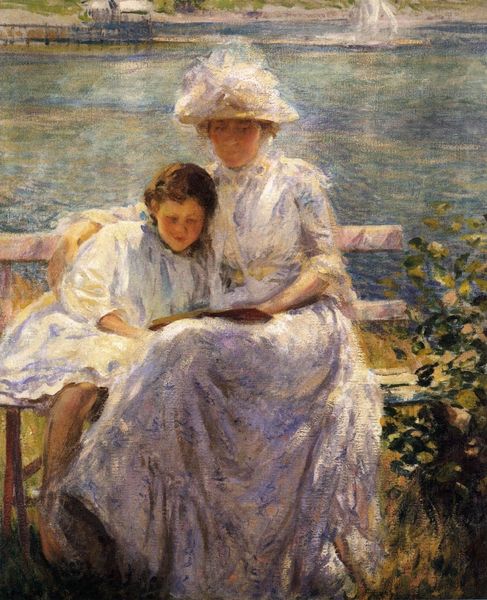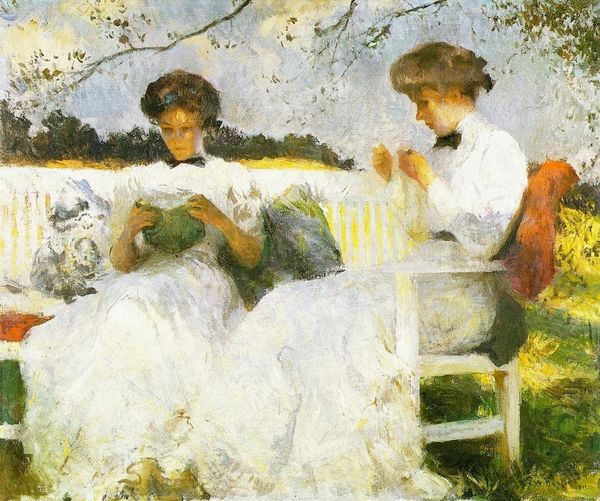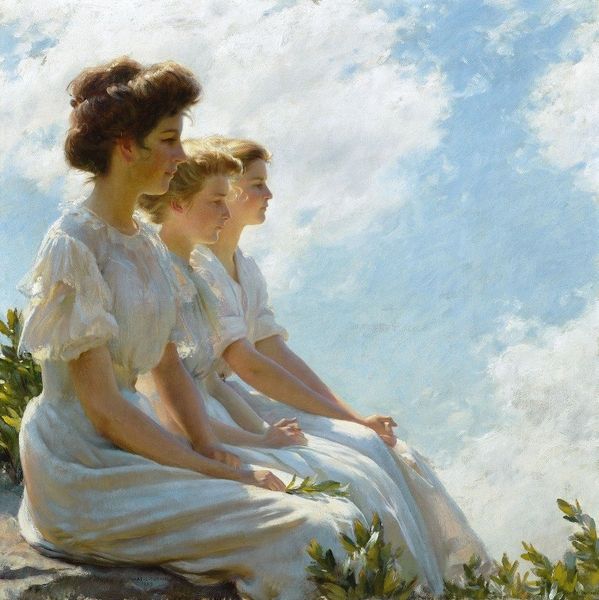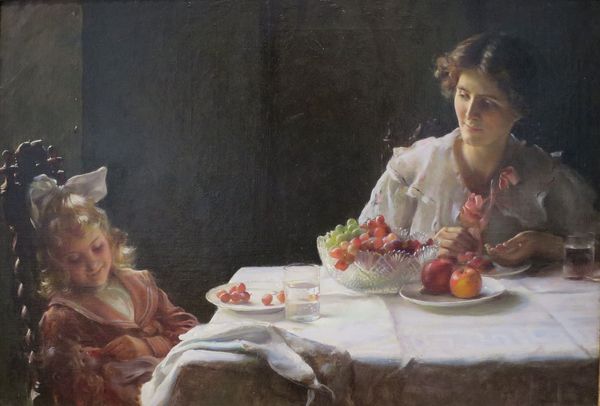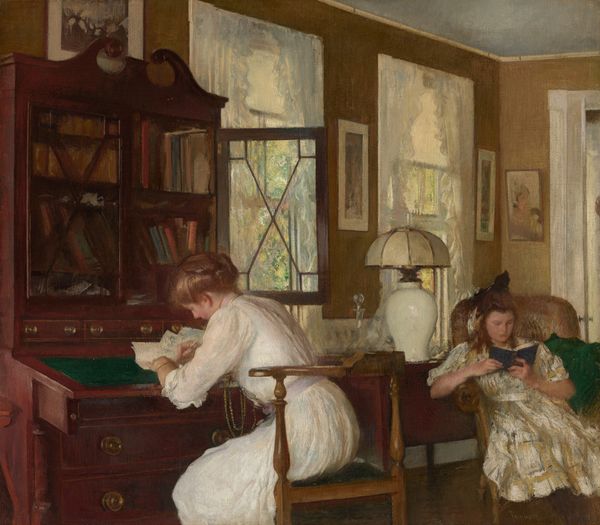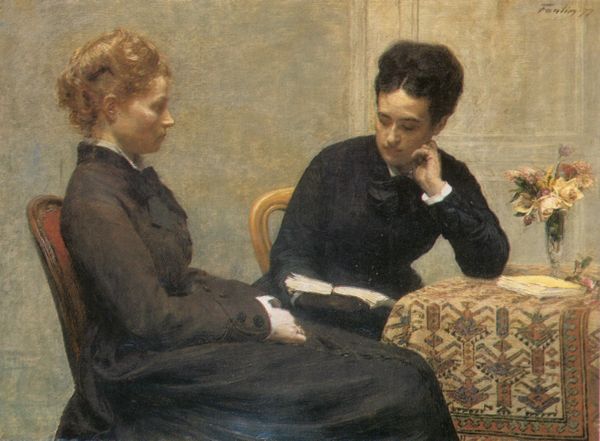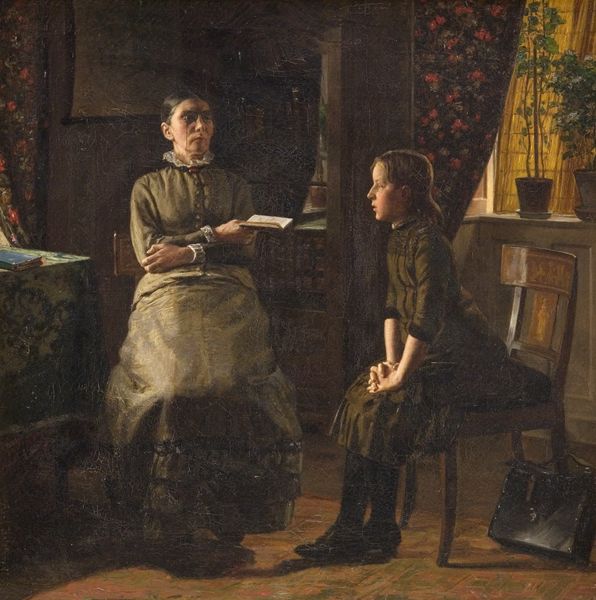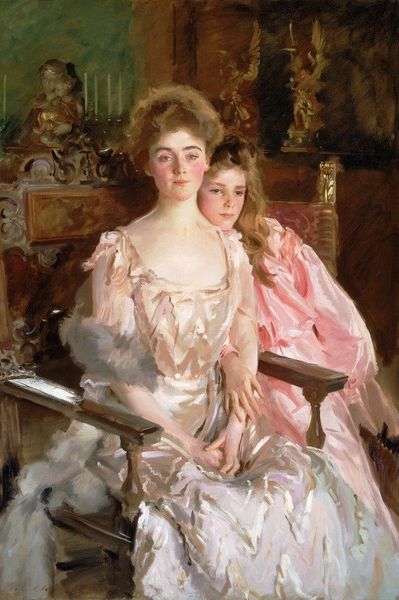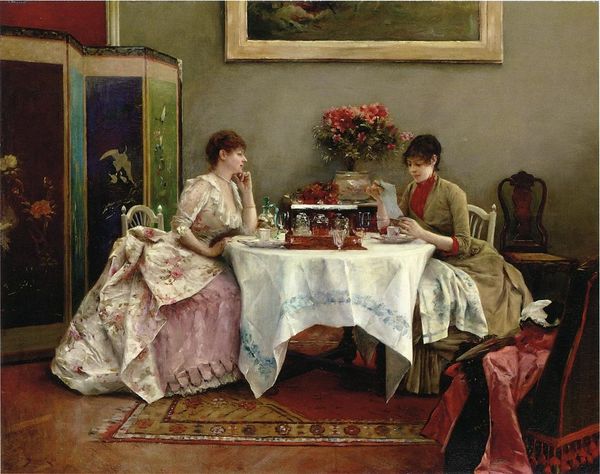
#
portrait
#
gouache
#
acrylic
#
girl
#
possibly oil pastel
#
oil painting
#
acrylic on canvas
#
underpainting
#
men
#
teen art
#
painting painterly
#
portrait art
#
fine art portrait
Dimensions: 51 1/4 x 71 1/8 in. (130.2 x 180.7 cm)
Copyright: Public Domain
Editor: Julian Alden Weir's "Idle Hours," painted in 1888, captures two figures in a domestic setting, apparently using oils or something with that sort of texture. I’m curious about the composition—what drew Weir to paint this scene, and how did he approach it? Curator: Thinking materialistically, I find the subject interesting in how it considers the rise of leisure culture in the late 19th century. The very title, "Idle Hours," directs us to consider changing societal views on work, rest, and how domestic spaces are transformed by increased consumerism and access to commodities such as musical instruments, ornate pillows and patterned fabrics. Editor: So, the material surroundings point towards a specific social class enjoying new leisure time? Curator: Precisely. The accessibility of these objects suggests a move beyond strictly utilitarian items. The artistic skill in rendering these fabrics is apparent but also invites viewers to acknowledge that the picture might not be of immense aesthetic profundity; its primary subject could well be the demonstration and ownership of recently inexpensive consumer products available to all classes for decoration. Editor: I see your point about the ‘idleness’ being a relatively new concept tied to industrial shifts. What about the figures themselves? How do they factor into this material reading? Curator: Note their clothing – simple yet suggesting ease and comfort rather than active labor. The subtle brushstrokes convey their softness. Their attire contributes to the overall impression of cultivated leisure – and again, to the access to commodities that have shaped and dressed these individuals in the image. Editor: So it is possible that the very act of creating and exhibiting such a painting served as another facet of this cultural shift towards material ease and redefined working roles? I am so intrigued by all that the scene's texture contributes to that. Curator: Absolutely. Reflecting on "Idle Hours", it serves less as a traditional portrait, and more as a tableau of emerging material possibilities shaping identities of people within domestic spaces. Editor: This materialist approach really opens my eyes. I would never thought there was all this going on with these everyday objects. Thank you for elaborating.
Comments
No comments
Be the first to comment and join the conversation on the ultimate creative platform.
